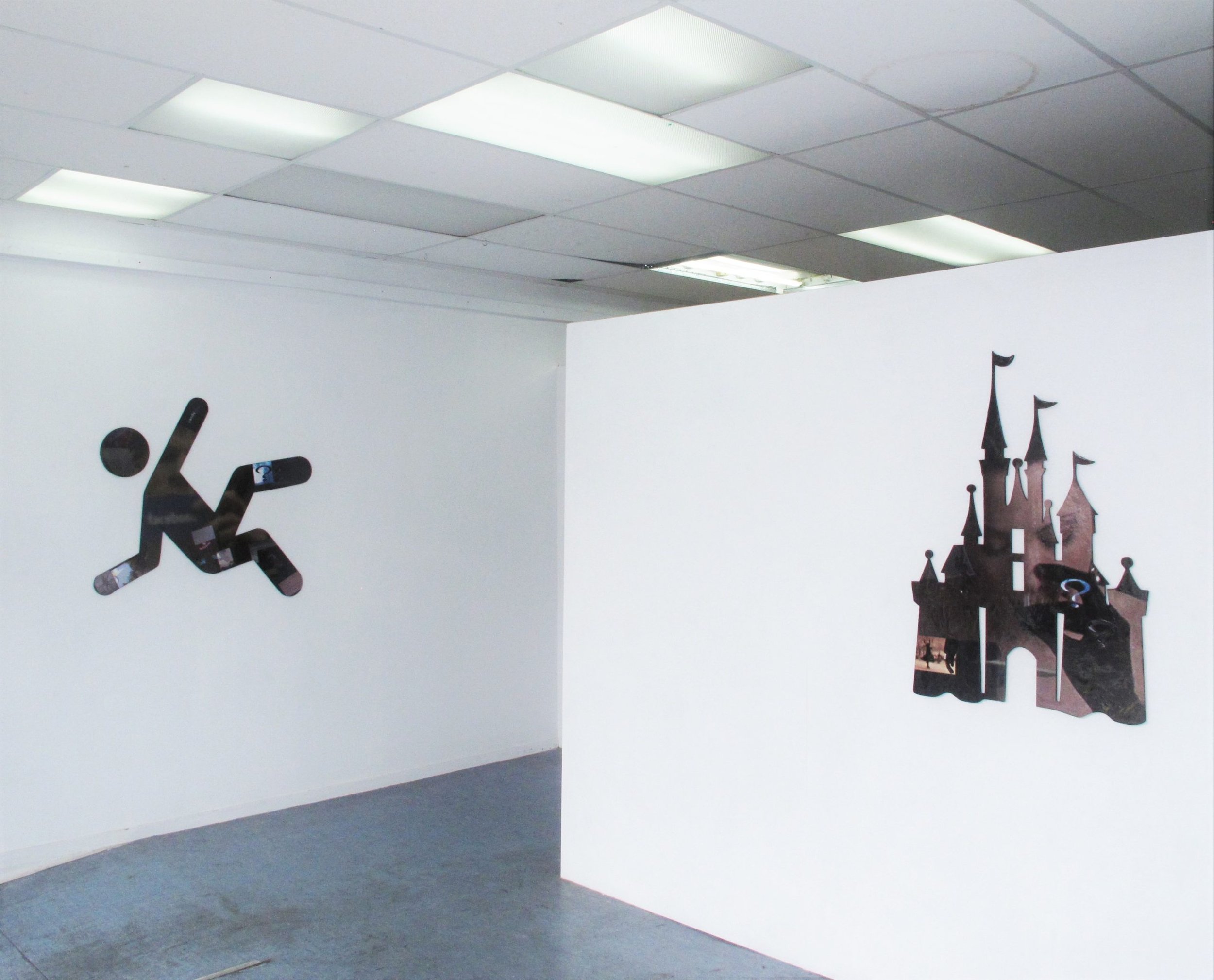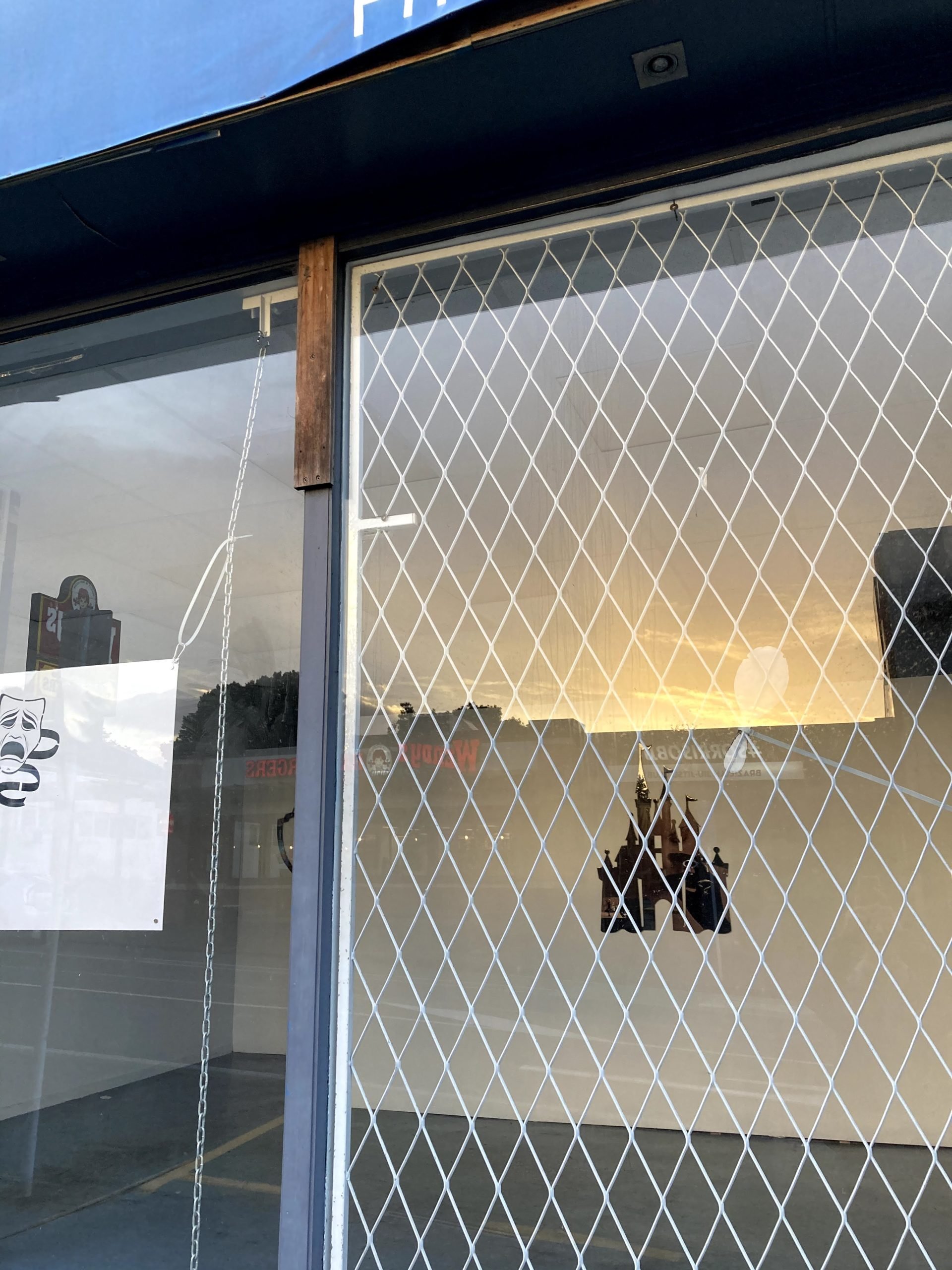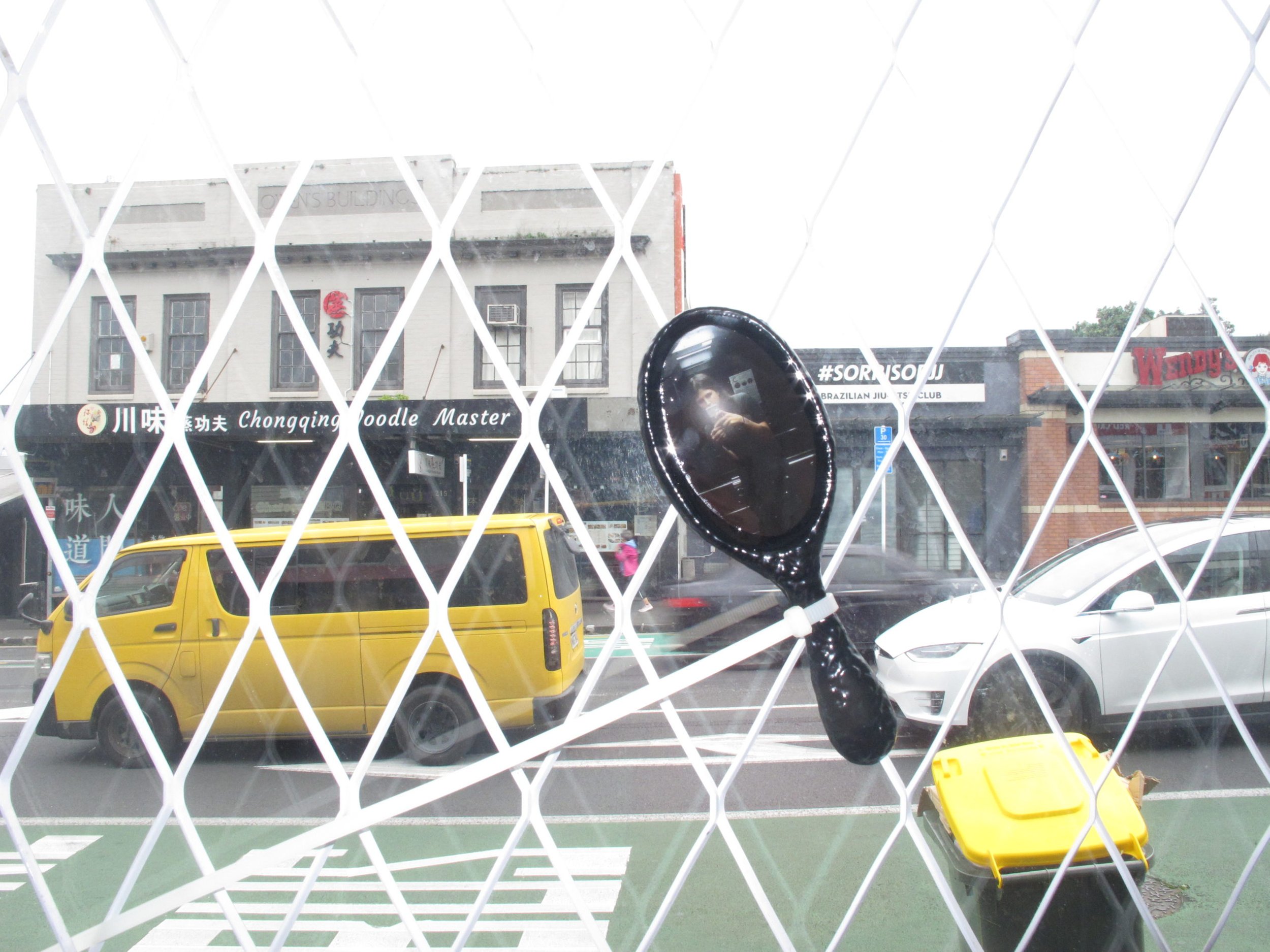Film4Ever
Ali Senescall, The World is Yours. Installation view, Satchi & Satchi & Satchi, May 2021
The World Is Yours. Like that effervescent edict in the mise en scene of Scarface’s ultra-violent climax, we (metaphorically) read these words over the entranceway to artist Ali Senescall’s most recent Satchi & Satchi & Satchi exhibition and feel equal parts promise and sadness. Promise because the world being ours is a call to arms, an invitation to stake a greater claim in everything we see; and sadness, because lurking within this invitation is a redundancy, that perhaps the world remains an inheritance of shit. A dying world. Not a gift but a burden, in which ownership looks less like the seventies-gilded coke-fortune of Tony Montana, and more like the robot-worried eco-waste of Pixar’s Wall-E.
It’s a cunning trick, this promise that also withholds. Like the neons of film-maker Brian De Palma’s otherwise gorgeously art-directed saga of fraught immigrant statuses and macho brutality, Senescall’s The World Is Yours holds a bauble out (commodity-symbols assembled from movie-stills, non-functional mirrors) with it’s fingers crossed behind it’s back. It’s not giving anything. It’s taking away. The prettiness vapid, empty, affectively luring only so it might snatch something weightier than a surface from it’s audience. Infinitely smooth, uncannily gorgeous. Envious of that which bleeds and digests, the surface has no insides (a body without organs, etc).
While cinema can be all of these things (an empty promise, a pretty package lacking content), it’s potential to be more (or to at least point to more) is what Senescall’s work orbits. It’s as if Senescall were slowly, patiently mining his memories of certain films for epiphanies that he is still withholding, convinced they will form eventually. Like pearls waxing in the coiled lips of a clam, or an ossified turd slowly pressurising into a diamond however many leagues beneath the earth.
On being asked when his filmic interests began, so prevalent in their work which deftly combines sculpture and photography in freewheeling embodied collage, Senescall says “I was twelve when my dad showed me [the film] Dazed and Confused and that was it for me... but I think I began to incorporate this obsession into my art while I was working in video stores. ”
“The DVDs on the shelves combined with the movie posters as wallpaper were very satisfying to me aesthetically. Especially VHS cases as objects. I would get insanely bored during the night shifts and start making handbags from them”
On boredom;
In European filmic grammars, like the aggressively still camera work of self-professed modernist Michael Haneke, boredom is deployed strategically. It is perhaps telling of the times we live in now how this technique has vanished even from more independently-minded fare, where you’d expect these approaches might have survived outside the (American) visual-hegemonies of fore-grounded action and CGI-bombardment.
To compensate for a lack of content, modern cinema flails like a carnival-carousel.
Our appetite for boredom, or our peripheral grasp of it’s psychic utility, seems to have evaporated in our more networked consumption of visual cultures. Why wait for the cinematic event and all the laboured cultural production it promises, when the semantic equivalent of a feature-length presentation can be whittled down to a few images and bottom-text, then disseminated en-masse like a PSA?
Why indeed...
“It’s been very empowering realising the potential for film as a praxis for art instead of actually making a movie” says Senescall, “although some day I would love to.”
This nostalgia for the embodiedness our media once had (crafting handbags from disused VHS cases, film’s outmoded objectal retainer) imbues Senescall’s work with a melancholy. Within the destruction of the object(s), and the ‘post’ era in which these tapes are not actively watched, they effectively become bodiless—we are haunted by them. Senescall‘s work reaches back to quite literally sculpt a new body for cinema; and in doing so, he attempts to resuscitate it’s healing properties.
As Senescall shows us, if a purity of narrative can be perceived and differentiated from commercial encroachments, then perhaps the cinematic diegesis is not yet dead; rather, just gestating. Waiting for a Second Coming. Gone to ground like Persephone’s seasonal jaunts in the underworld, shuffling her feet and eating pomegranates until the wheel turns and she can usher in the spring again.
Hanging out for a revival.
This is a tender collection. An inventory by which we might index what’s valuable, what’s worthless, and what could still scaffold our dreaming towards better versions of ourselves.
Ali Senescall, The World is Yours. Installation view, Satchi & Satchi & Satchi, May 2021
Ali Senescall, The World is Yours. Installation view, Satchi & Satchi & Satchi, May 2021
Ali Senescall, The World is Yours. Installation view, Satchi & Satchi & Satchi, May 2021
Ali Senescall, The World is Yours. Installation view, Satchi & Satchi & Satchi, May 2021
Ali Senescall, The World is Yours. Installation view, Satchi & Satchi & Satchi, May 2021
Ali Senescall, The World is Yours. Installation view, Satchi & Satchi & Satchi, May 2021
Ali Senescall, The World is Yours. Installation view, Satchi & Satchi & Satchi, May 2021








